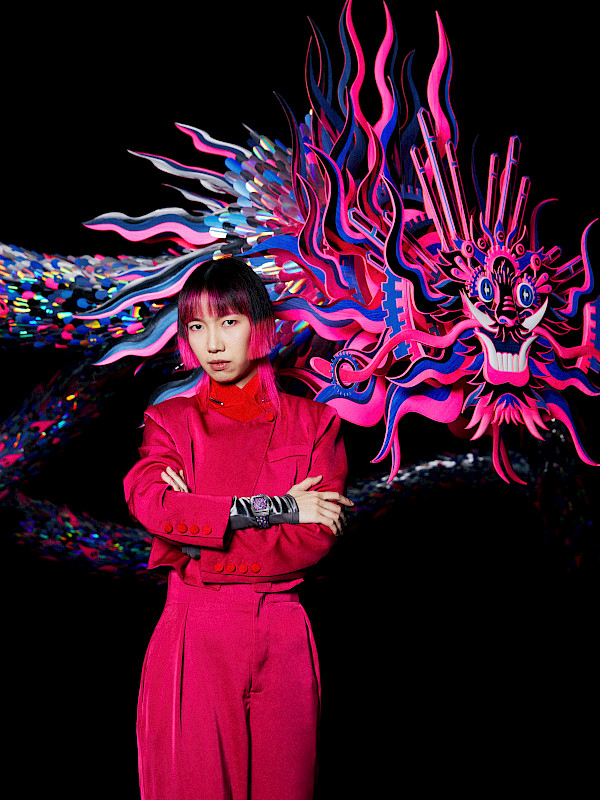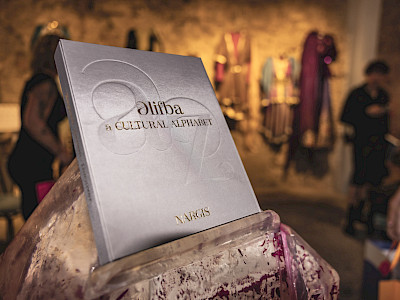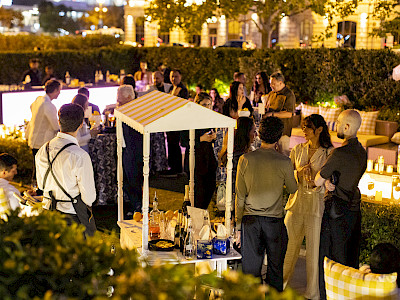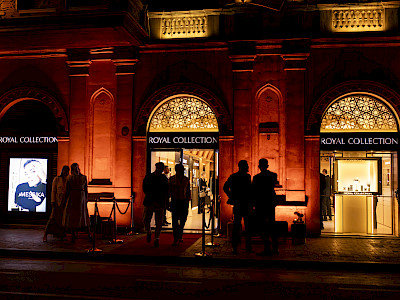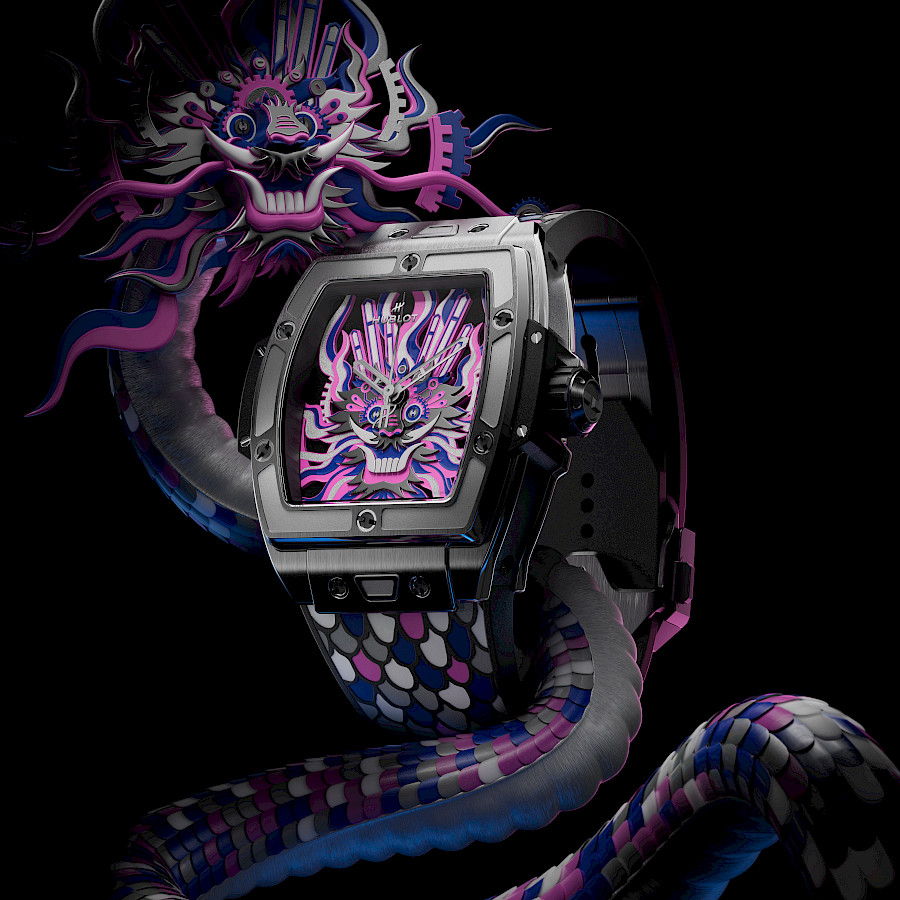
There’s a Magical Chinese trinity that Hublot takes on: An eastern dragon also known as the “long” and two ancient art forms: paper cutting and marquetry. And that’s how the Spirit of Big Bang Titanium Dragon came out.
China, as a country with rich ancient culture and special spirit of Asian traditions, was always very powerful at traditional art of paper cutting. Drawing inspiration from this traditional Chinese art, the Spirit of Big Bang Titanium Dragon layers its hands, wheels and H-shaped screws to from a 3D silhouette of an eastern dragon.
In the Chinese calendar, 2024 marks the return of Dragon, which comes around every 12 years. This celestial creature, revered Chinese culture, is associated with prosperity. A symbol of luck, strength and wisdom, the dragon is also an imperial icon that embodies life and immortality. Loong is a symbol, an icon, and the universal auspicious meaning is the foundation of Loong culture. Also known as the Loong, it takes on the features of nine different animals—the eyes of a prawn, the horns of a deer, the mouth of a bull, the nose of a dog, the whiskers of a catfish, the mane of a lion, the long tail of a snake, the scales of a fish and the claws of an eagle. A dragon whose metamorphosis has taken place over several thousands of years. Under Chen Fenwan’s touch, this sacred animal, talisman and totem, celebrates one of the greatest cultural legacies of Chinese art: the art of paper cutting. This is a craft that originated in China around 2,000 years ago, coincinding with the invention of paper. Chinese paper cutting has been on the Representative List of the Intangible Cultural Heritage of Humanity since 2009 and is used to express the moral principles, philosophies and aesthetic ideals of its creators. It is used in festivities to honour events such as weddings and births, and paper-cut decorations symbolising happiness and good luck are intrinsic to Chinese New Year celebrations.
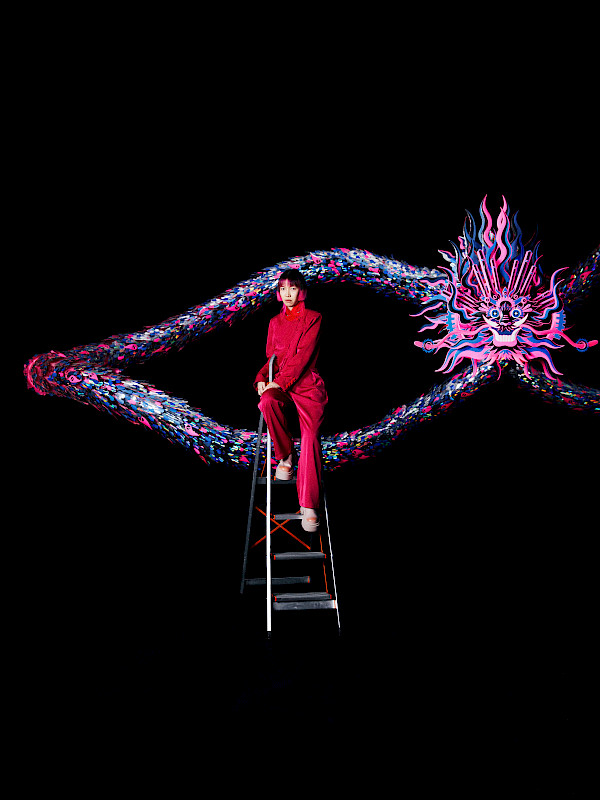
Hublot presents a rubber strap with a marquetry design for the very first time. The limited edition of 88 pieces, created in the country with the central artist Chen Fenwan, focuses on the ancient art of Jianzhi paper ornament, which is a process of the fine threads and carvings of various paper images, patterns and compositions, The perfect fusion of tradition and modernity, combining metaphors and symbols in the spirit of Hublot: first, unique, different!
A rubber strap with a marquetry design Hublot has invited Chinese artist Chen Fenwan to combine traditional Chinese “sculpture in the round” with contemporary art, creating a majestic and dynamic loong, which conveys an auspicious atmosphere as it rises to the heavens. This artwork symbolizes the ever-renewing totem of life. Expressing Hublot’s philosophy ‘Be First, Unique and Different.
In a 42 mm titanium case, Hublot transposes the layered effects of paper cutting into a multi-level dial construction overlaying a base panel with several levels of appliqués that incirporate the aesthetic codes of Hublot’s components.The dragon’s silhouette extends onto the rubber strap, which features a rubber marquetry motif—a first for Hublot. Each of the dragon’s scales is coloured and nano-vulcanised to be integrated into the strap. This delicate decorative operation is carried out entirely by hand and takes around 8 hours per strap. The Spirit of Big Bang Titanium Dragon, offered in a limited edition of 88 pieces, comes with a second, titanium-grey Velcro fabric strap. Tthis Chinese New Year celebration features an HUB1710 automatic movement and power reserve of 50 hours.
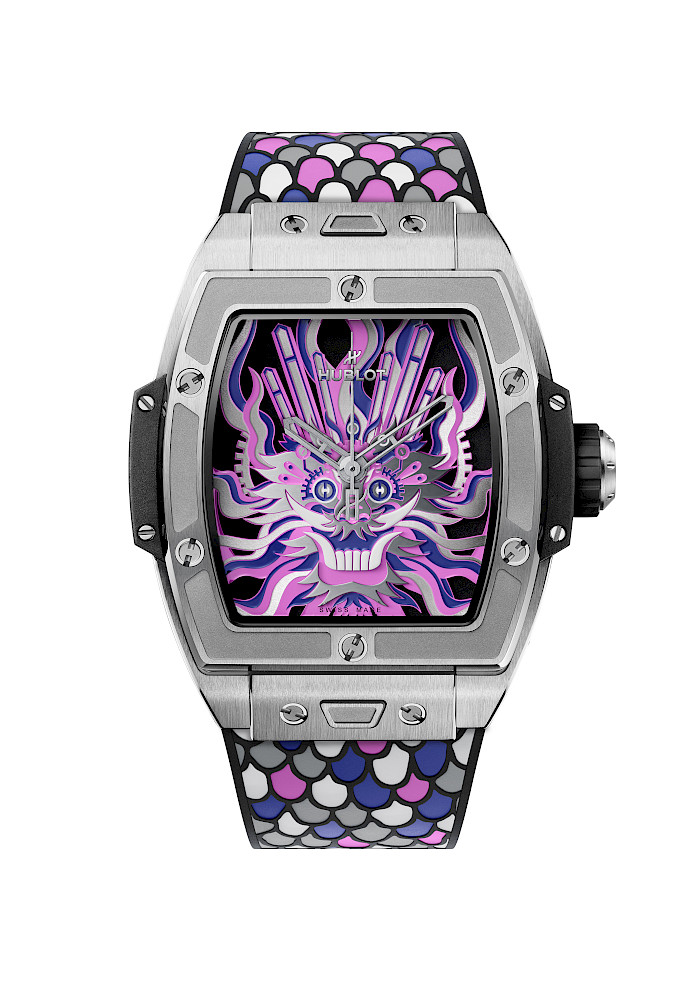 |
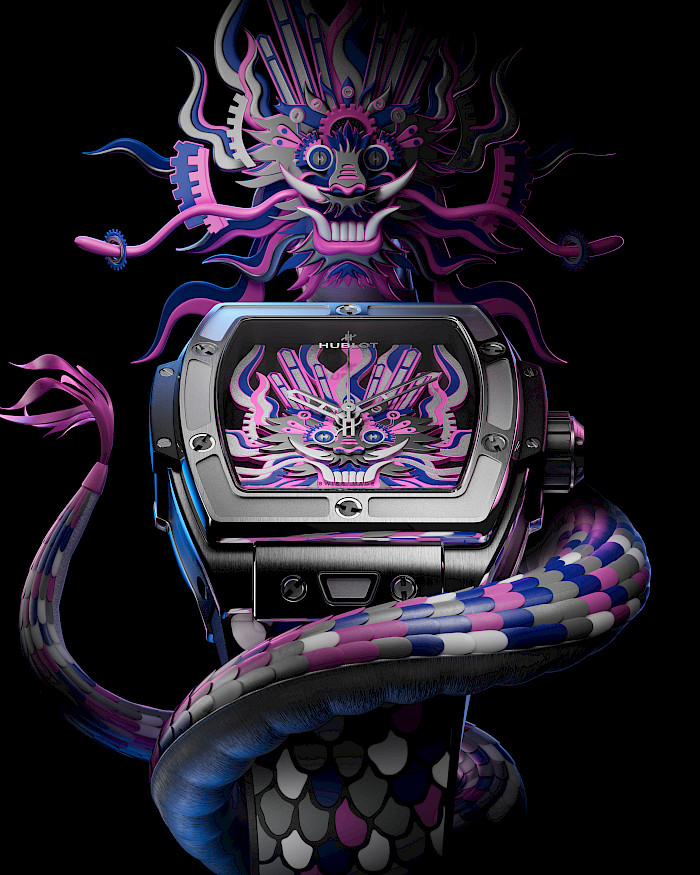 |
So, did you manage to see the hidden dragon inside? This masterpieces of horology embodies the metaphor of “fusion art” and the art of constantly remaining the fields of materials. The symbol of Hublot philosophy offers a new way of interpreting time thanks to its disputive abilities. The components of its pieces: hands, cogs or screws, are positioned in multi- dimensional layers to form a dragon’s silhouette created in paper cut-outs by the Chinese artist Chen Fenwan. The dragon’s head made up offive layers that alternate between hands, wheels and H-shaped screws, with a body and scales that extend onto the strap. The colours, reflect those of the paper cut-out sculpture created by Chen Fenwan. In a 42 mm titanium case, Hublot transposes the layered effects of paper cutting into a multi-level dial construction overlaying a base panel with several levels of appliqués that incirporate the aesthetic codes of Hublot’s components.The dragon’s silhouette extends onto the rubber strap, which features a rubber marquetry motif—a first for Hublot. Each of the dragon’s scales is coloured and nano-vulcanised to be integrated into the strap. This delicate decorative operation is carried out entirely by hand and takes around 8 hours per strap.
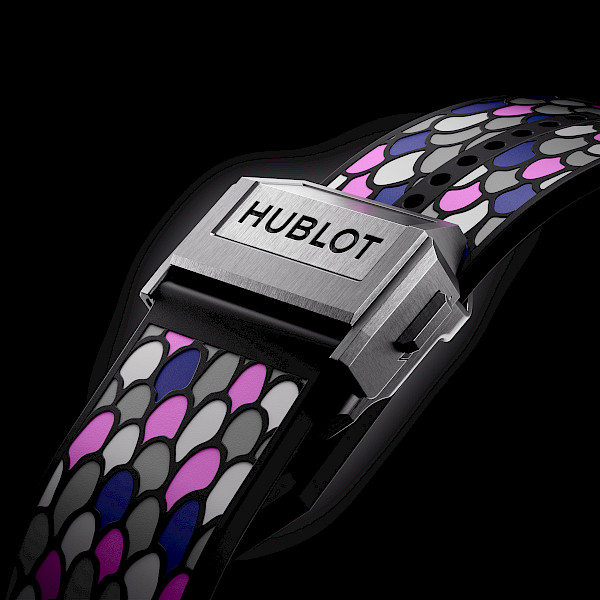
CHEN FENWAN
Chen Fenwan graduated from the Printmaking Department of the Guangzhou Academy of Fine Arts. She often combines Chinese folk paper- cutting with contemporary art. When she was young, and was hailed by the media as the “top paper- cutting artist of the post -90s”. Her works are based on the concept of ‘paper’ but are not limited to a specific medium, and she actively explores the multi-dimensional boundaries of art in the public sphere in an attempt to dialogue with a wider group of people. Most of her works lie in the language of paper, bringing imagination of narrative on flexible materials. She excels at combining her personal experience with universal memories, in which the emotional tension of collective resonance gather to communicate with a wider audience and inhabit public spaces.
Chen Fenwan was named as one to watch by the Chinese Modern Art Archive (CMAA) in 2019. In 2022, her two in-site works Hello, Walls and Papercut on the Earth’s Window exhibit in Art Field Naihai Guangdong. In 2021, The West Lake in Vectorial Dynamic was created as a public work through solicitation. One of her Representatives Lucky Garden participates in the 2021 Chengdu Biennale Exhibition, as well as the ten-year exhibition of Zhejiang Art Museum in 2019. Infinite has been touring exhibited for 11 times from 2018 to 2021. In recent years, she has taken "symmetry" as her personal research topic, to continue to her large-scale artworks such as A Symmetrical Nature series and Jintian in Tianjin, constantly giving new understanding to stage by way of contemporary paper cutting.
